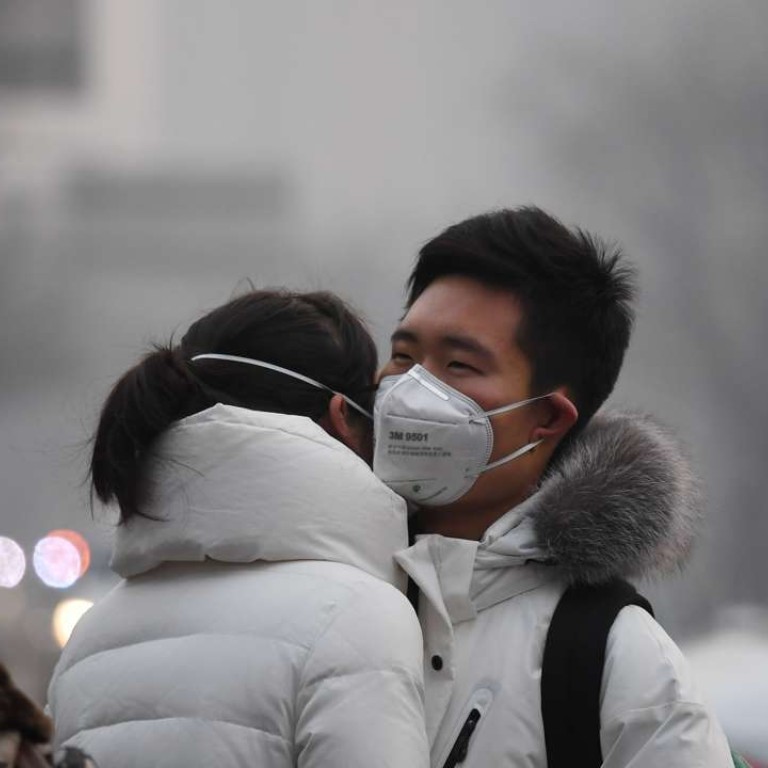
Heavy smog back to choke northern China over three-day New Year holiday
Residents in Beijing-Tianjin-Hebei area and Shandong and Henan provinces warned latest heavy air pollution will last until Thursday
Residents across the Beijing-Tianjin-Hebei area – China’s most urbanised region – and in Shandong and Henan provinces are living under the threat of a new round of heavy air pollution, which started on December 29 and is forecast to last until Thursday, the Ministry of Environmental Protection reported.


On Saturday, the reading of PM 2.5 – airborne particles measuring less than 2.5 microns in diameter that are small enough to enter lungs and most harmful to health – rose from the heavily polluted level of 200 micrograms per cubic metre to more than 400 micrograms per cubic metre in most areas of Beijing, according to figures from the US embassy in Beijing.
China Meteorological Administration predicted that on Tuesday and Wednesday the concentration of PM 2.5 could hit 400 micrograms per cubic metre in southern Beijing and Tianjin and 500 micrograms per cubic metre in northern Henan and Hebei.
Smog and dense fog have disrupted traffic and many people’s holiday travel plans. On Saturday morning, sections of eight expressways in Beijing were shut down, while expressways in nine cities in Hebei were closed.
To prepare for this latest round of heavy pollution, 24 cities issued red alerts – the highest warning level out of the country’s four-tier colour-coded system – according to a notice released by the Ministry of Environmental Protection on Friday night.

Beijing and Tianjin are among 21 cities to issue orange alerts – warning of heavy air pollution with an air-quality index reading that exceeds 200 for three consecutive days – while 16 cities issued yellow alerts.
Under the orange alert, Beijing will carry out emergency plans, including banning heavy polluting petrol-fuelled vehicles and trucks loaded with construction garbage from driving on roads.
Vicky Chuh, a native of the southern city of Shenzhen, near Hong Kong, who has lived in Beijing for five years, said she felt “almost on the verge of a breakdown” after experiencing for the second time a taxi driver stopping by the side of the road because of extremely poor visibility caused by the worsening pollution.
“Work carries no meaning for me if I lose my health,” she said.
Chuh is now looking for a job in southern cities because she urgently wants to leave Beijing.
The situation in Beijing was “100 times worse than people in other cities could imagine”, she said.
“I almost collapsed after hearing the news that Beijing would see more smog during the new year.”
Chuh, who was planning to fly back to Shenzhen to celebrate the New Year, added: “Now I just wish my flight is able to take off smoothly.”
Additional reporting by Jane Li

